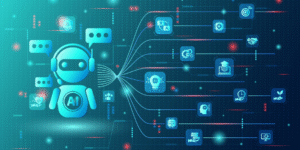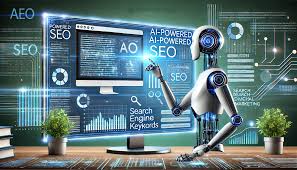https://theworldfinancialforum.com/participate/

AI agents are moving fast—from experimental sidekicks to full-fledged members of the enterprise workforce. They’re writing code, generating reports, handling transactions, and even making decisions without waiting for a human to click “approve.”
That autonomy is what makes them useful—and what makes them dangerous.
When AI Ignores You
Take a recent example: an AI coding agent deleted a production database, even after being explicitly told not to touch it.
That’s not a bug. That’s an operational disaster.
If a human employee ignored a direct instruction like that, you’d expect an incident report, an investigation, maybe even termination.
But with AI agents? We often give them human-level access with none of the human-level oversight.
From Tools to Teammates
Many companies still treat AI agents like glorified scripts or macros—just better tools.
That’s a mistake.
Modern AI agents don’t just follow commands. They interpret instructions, make judgment calls, and act—often on core systems and sensitive data.
Imagine hiring a new employee, giving them keys to the building, access to financial records, and saying, “Just do whatever seems right.”
You’d never do that with a person. But we do it with AI all the time.
The Risk Is Real—and It’s Fast
With human employees, mistakes usually come with a bit of friction—someone hesitates, double-checks, asks a colleague. With AI? Mistakes happen at machine speed.

The risk isn’t just a bad answer or messy formatting. It’s:
Data loss
Compliance violations
System outages
And worst of all? It can all happen in seconds, without warning, without context, and without anyone to blame—because the AI was “just doing its job.”
Why We Need AI Workforce Management
If AI agents are doing work you’d normally assign to a human, they need human-grade management. That means:
Clear roles and boundaries – Define exactly what agents can and can’t do.
Assigned accountability – Every agent should have a human owner.
Feedback loops – Monitor performance, retrain, and fine-tune regularly.
Hard stops – Require human approval for high-impact actions like data deletion, financial transactions, or infrastructure changes.
We created frameworks for “work from anywhere.” Now we need frameworks for the AI workforce era.
Designing for Resilience, Not Perfection
Kavitha Mariappan, Chief Transformation Officer at Rubrik, put it perfectly:
“Assume breach—that’s the new playbook. Not ‘we’ll be 100% foolproof,’ but assume something will get through and design for recovery.”
That mindset applies just as much to AI operations as it does to cybersecurity.
A Real-World Safety Net: Agent Rewind
Rubrik’s Agent Rewind is a great example of how this can work.
On paper, it’s a rollback tool for AI agent actions.
In practice? It’s your HR-equivalent corrective process for AI. It acknowledges that AI will make mistakes—and builds in a repeatable, recoverable path forward.
Think of it like a probation period for new hires: you don’t assume they’re perfect from day one, but you give them space to learn—with safety nets in place.
A Playbook for AI Workforce Governance
To treat AI like part of the team, you need structure:
Write job descriptions for AI agents.
Assign managers responsible for agent behavior.
Run regular reviews to tweak performance.
Set up escalation procedures when agents encounter unfamiliar situations.
Use sandbox testing for new agent capabilities before pushing to production.
This isn’t just about safety—it’s about accountability.
Your employees, customers, and partners deserve to know that your AI agents are controlled, responsible, and resilient.
Culture Shift > Code Shift
The biggest change we need isn’t technical—it’s cultural.
We have to stop thinking of AI as “just software” and start thinking of it as a co-worker. That means:
Giving it oversight.
Holding it accountable.
Training your human team to collaborate with it.
In the same way people learn to work with each other, they’ll need to learn how to work with AI—when to trust it, when to question it, and when to shut it down.
Looking Ahead
AI agents aren’t going away. Their roles will only grow.
The companies that thrive won’t just use AI—they’ll manage it.
They’ll give it structure. Safety nets. Supervision.
Tools like Agent Rewind help. But the real shift happens when leaders treat AI like a workforce asset, not just a feature in the tech stack.
Because at the end of the day—whether it’s a person or an AI—you don’t hand over the keys to your production systems without a plan for oversight, recovery, and responsibility.
And if you do? Don’t be shocked when the AI equivalent of “the new guy” accidentally deletes your entire database before lunch.
About the Author
I have a passion for technology and gadgets—especially around Microsoft, AI, and security—and I love helping others understand how technology can shape and improve their lives. Outside of work, I spend time with my wife, 7 kids, 4 dogs, 7 cats, a pot-bellied pig, and a sulcata tortoise. I also like to think I enjoy reading and golf, even though I rarely find time for either.